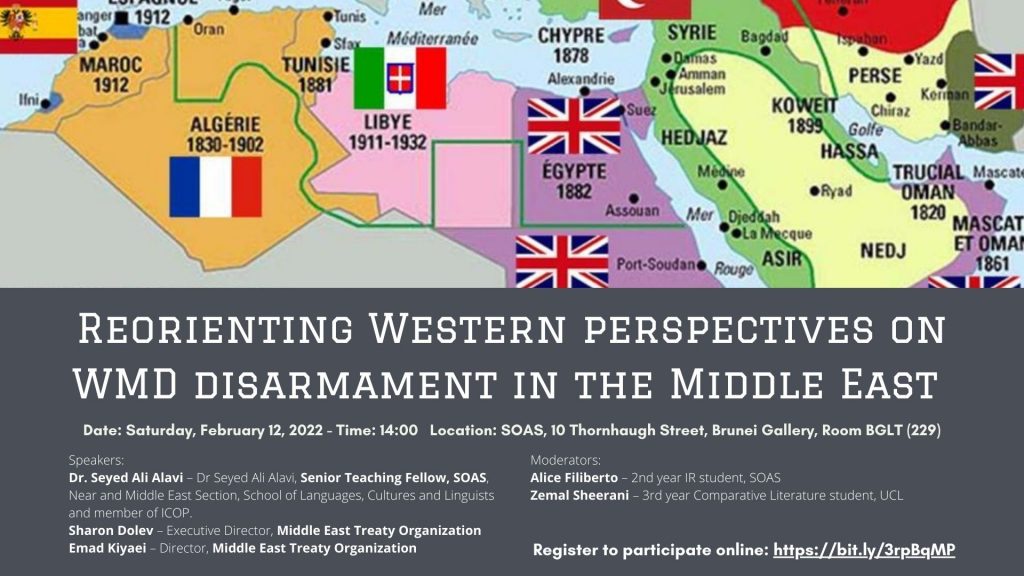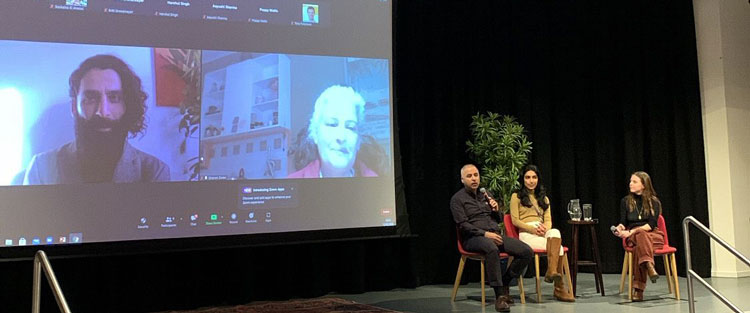On the 12th of February, METO and Influencing Corridors of Power (ICOP) co-hosted a hybrid event ‘Reorienting Western perspectives on WMD disarmament in the Middle East’, which took place at SOAS University of London. The event was moderated by Alice Filiberto and Zemal Sheerani, who are both members of METO University Network, and introduced by METO programme associate, Anahita Parsa.
METO directors, Sharon Dolev and Emad Kiyaei, together with senior teaching fellow at SOAS Seyed Ali Alavi, discussed the role that Western powers have had, throughout history, in the possession and proliferation of weapons of mass destruction around the Middle East and North Africa.
The event started with the intervention of Dr Alavi, who introduced the role that Israel and Iran have on regional and international levels, when it comes to nuclear, chemical and biological weapons. In his intervention, Professor Alavi highlighted the importance that each Arab state has in establishing a WMD Free Zone in the region, a theme that is not often discussed by the Western powers in nuclear weapons’ discourse.
Later, Sharon Dolev talked about the significant differences that there are between Israel and Iran and which have are not taken into account when their behaviour, as regards WMD, is analysed. She also emphasised the relationships between states of the region and the obstacles to peace which originated from the drawing of artificial borders, by Western colonial powers at the start of the 20th century.
To conclude, Emad Kiyaei summarised the context of proliferation of nuclear weapons and talked about the Orientalist vision of the West towards the Middle East and North Africa. The region is still interpreted as a land of war and devastation, as well as dictatorship, where the potential possession of nuclear weapons by countries like Iran, Saudi Arabia and others represents an additional threat to the security and stability of the West. Thanks to their passionate interventions, the audience—both online and in the room—was engaged in an animated question and answer session.


